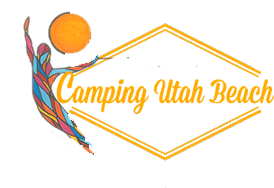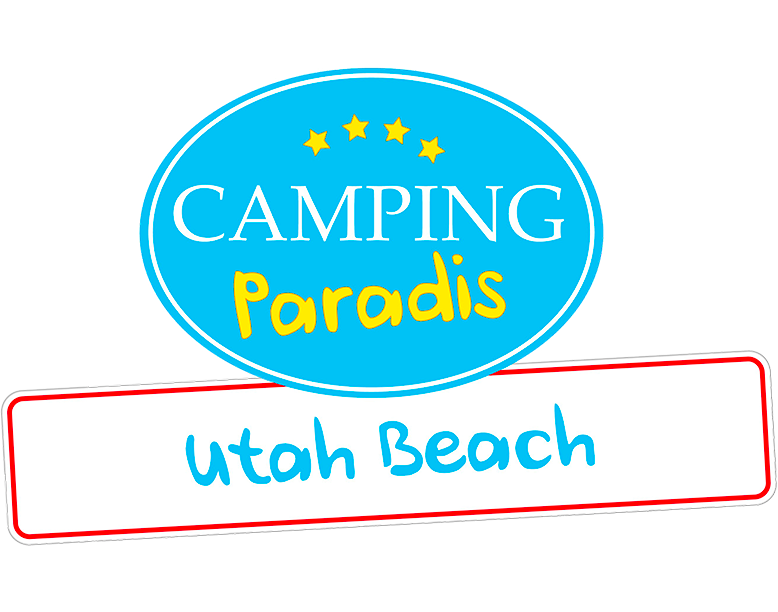This site uses cookies. Browsing the website means you acknowledge and accept our privacy policy as well as the use of third-party cookies intended to provide you with the best possible website experience.



Our Utah Beach campsite in Normandy is just a few meters from the famous WWII landing beaches. The June 6, 1944 D-Day beaches are a must-see when you visit the Manche. The Normandy beaches are now a gathering place. Millions of tourists come each year to visit the beaches, cemeteries, and museums, paying homage to the soldiers.
During your trip to the Cotentin peninsula, explore the American sector D-Day beaches in Normandy. From monuments to museums, you will follow the path of the liberation. You will discover the history of the German occupation, the Atlantic Wall, and D-Day at Utah Beach.

Utah Beach, to which the campsite offers direct access, is the westernmost of the drop-off beaches. Along with Omaha Beach, it is part of the American sector. The only allied landing beach located in the Channel, it is 5 km long and is home to the Utah Beach Landing Museum. Further east, on the other side of the Carentan Canal, Omaha Beach is sadly famous for being the beach on which the allies lost the most troops. The American cemetery of Colleville-sur-Mer, connected to the beach by a footpath, is located at its level. Gold Beach, Juno Beach and Sword Beach are the code names for the beaches in the Anglo-Canadian sector. On June 6, 1944, Gold Beach saw 25,000 men land, Juno Beach more than 30,000, and Sword Beach nearly 29,000. Sword Beach also saw the landing of French commandos created by the Free France.

It is during the Second World War that the peaceful beaches of Normandy gain their fame. Indeed, while the whole of France was occupied by the Germans, the United States, Canada and Great Britain joined forces and formed an alliance to liberate Europe and put an end to the war.
On June 6th, 1944 at dawn, the first allied troops land on Utah Beach and Omaha Beach. All day long, nearly 155,000 soldiers and 20,000 military vehicles landed on five Normandy beaches renowned for the occasion: Sword Beach, Juno Beach, Gold Beach, Omaha Beach and Utah Beach.
The battle against the German forces rages on. More than 10,000 men are killed in the clashes, especially on Omaha Beach. Finally, the “Atlantic Wall” is broken down and the Allies manage to go inland for about ten kilometres, liberating the first towns, including Sainte-Marie-du-Mont, Sainte-Mère-Eglise and Ranville.

Nowadays, it is possible to visit the landing beaches both for remembrance work and to relax, swim or have fun with the family.
Near the beaches, the graves of soldiers who died fighting for freedom line up in the rows of military cemeteries. Let’s take a closer look at the different places of memory of the Normandy landings to visit.

The beaches of Normandy were the scene of a major historical turning point in the 20th century. These stretches of sand, steeped in history, are home to several sites commemorating the Allied landings of 6 June 1944 : museographies explaining the course of the military operations, but also memorials, cemeteries and places of meditation in memory of the thousands of men who fell during the Battle of Normandy. Among the must-see sites along the coast are the Caen Memorial Museum, the strategic point of Le Hoc between Utah Beach and Omaha Beach, the American cemetery at Colleville-sur-Mer, the Juno Beach centre dedicated to the intervention of Canadian troops, Mulberry (artificial harbour at Arromanches), the German battery at Longues-sur-Mer on the cliff at Gold Beach, and the village of Sainte-Mère-Église, one of the very first to be liberated. The D-Day landing museum is also not to be missed during your stay.
Sword Beach is located in Ouistreham and it is here that the 4th Franco-British Commando landed. Today, you can visit the Atlantic Wall Museum known as “The Great Bunker” installed in a former fire direction post. You can also discover the Museum of the N° 4 Commando, which contains many relics of the Normandy landings.
Juno Beach, in Courseulles-sur-Mer, is where the Canadian forces landed. On D-Day, nearly 14,000 Canadians and 9,000 British launched an assault on the enemy. However, losses were heavy and many men lost their lives on the beach.
The Juno Beach Centre is a very modern Canadian museum that welcomes you to experience the history of Canada during the Second World War.

Located in Arromanches, Gold Beach was the central location for the landing. It was the 50th Northumbrian, led by the famous General Graham, who landed there on 6 June 1944. An artificial harbour was built there, the remains of which can still be seen today.
The Landing Museum located nearby tells the story of the Battle of Normandy and the construction of the harbour. As for Arromanches 360, it is a circular cinema in which you will view archive images taken during the D-Day.
Sadly famous, it was at Omaha Beach that the losses were the heaviest. So much so, that the Americans nicknamed the beach of Colleville-sur-Mer “Bloody Omaha”. A statue of the Braves erected in memory of all those soldiers who died in battle stands on the beach.
It is therefore logical that the largest American military cemetery is located in Colleville-sur-Mer. The Omaha Beach Memorial, 200 metres from the beach, recounts the bloody history of the landings, while the Overlord Museum displays an impressive collection of military vehicles and pieces.
Utah Beach in Sainte-Marie-du-Mont was the most strategic place to take over the port of Cherbourg. The Utah Beach Museum presents the history of the landing in a chronological tour, the highlight of which is certainly the presence of an authentic B-26 Bombardier.
Camping Utah beach is the ideal campsite to visit these beaches and your seaside holidays in Normandy. Indeed, the campsite is only a few metres from the beach. You will be able to enjoy the landing beach from the campsite.
